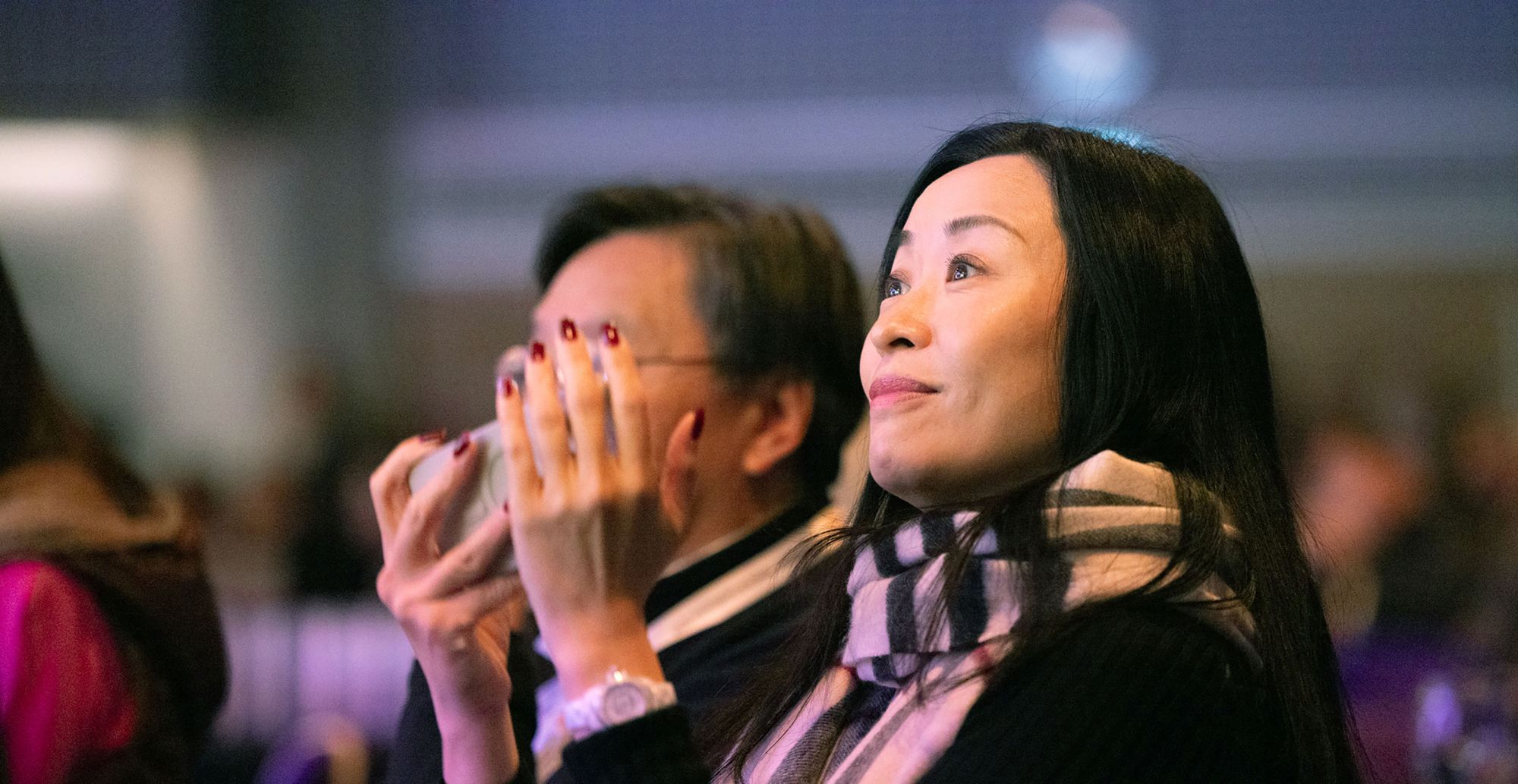Summary:
- The University of Hong Kong tops the QS World University Rankings: Asia 2026
- Mainland China is the most represented country, with 394 institutions. Three of those are in the top 10.
- India has 294 ranked universities. The Indian Institute of Technology Delhi is the highest ranked (59th)
The QS World University Rankings: Asia 2026 has been released. Featuring 1,526 universities, 557 of which are new entries, a total of 25 locations are represented, making this our largest release yet.
The aim of our regional rankings is to give a more specialised view of higher education in the region. New indicators are added which differ from those in the World University Rankings such as ‘Staff with a PhD’ and ‘Exchange Students’. Some indicators are given more weight in this ranking, and some are given smaller weights to paint an accurate picture of the priorities of universities in Asia. Access the full Rankings on TopUniversities.com
Top universities in Asia
The top 10 universities in this year’s Asian rankings are as follows:
1) University of Hong Kong
2) Peking University
=3) NTU Singapore
=3) National University of Singapore
5) Fudan University
6) The Hong Kong University of Science and Technology
=7) City University of Hong Kong
=7) Chinese University of Hong Kong
9) Tsinghua University
10) The Hong Kong Polytechnic University
Outside of the top 10, Van Lang University in Vietnam has seen the most significant improvement, moving up 159 places to rank =251st overall. The highest-ranking debut university this year was Nazarbayev University in Kazakhstan which placed =201st.
Regional trends
Important international student source markets and study destinations can be found all over Asia. Some are already well established and others new and emerging due to changes in the social and political landscape.
While the big four locations, the UK, the US, Australia and Canada, have dominated the international study market in previous years, new policies restricting student flows means that Asian destinations are becoming increasingly popular; particularly in East and South-East Asian countries like China, Japan, South Korea, Hong Kong (SAR) and Singapore. Many of these Asian universities are adopting a collaborative approach and working to expand their global reach.
Central Asia has seen the emergence of regional transformation hubs such as Kazakhstan which provides a safer and politically neutral alternative to Eastern European destinations such as Russia and Ukraine. Many TNE campuses are also opening in countries like Uzbekistan.
In South Asia, India continues to be a prominent source market and is also working to attract international students to study at their universities. Nepal and Bangladesh have also become important source markets with large proportions of their students choosing to study abroad.

China (Mainland)
Mainland China is the most represented location in the Rankings with 394 ranked institutions: three in the top 10, 13 in the top 50 and 25 in the regional top 100. It also had the highest number of ranking debuts: 260. Peking University is China’s highest ranked university this year, placing second overall. Furthermore, 48 of China’s universities moved up in the rankings with the highest climber, Shanghai University of Finance and Economics, rising 103 places to =283rd.
To improve their intake of international students, Mainland China is introducing a new STEM visa to make it easier for students hoping to study science, technology, engineering or medicine subjects to study in one of their top institutions. They are also making postgraduate work visas more accessible in an effort to retain the most talented students.
Hong Kong (SAR)
There are 11 universities from Hong Kong (SAR) in the Rankings with five in the top 10 and six in the top 100. The University of Hong Kong (SAR) moved up one place and is this year’s highest ranked institution. Nine of Hong Kong (SAR)’s universities managed to climb the rankings, most notably The Education University of Hong Kong, which moved up 60 places into 152nd.
Hong Kong (SAR) has the highest proportion of universities move up in the Asian rankings, 81.8%, followed by Malaysia and Thailand. City University of Hong Kong, ranked joint seventh in the region, is also scores highest for three indicators.
India
India has 294 universities in this year’s Rankings. The highest scoring of these, the Indian Institute of Technology Delhi, ranks =59th and is one of seven universities in the regional top 100. 36 Indian universities have improved their ranking this year with Sathyamaba Institute of Science and Technology seeing the biggest improvement and rising 111 places to rank =262nd.
India is undergoing a period of transformation under the National Education Policy 2020, which hopes to see India increase its gross enrolment ratio in higher education to 50% by 2035. Explore QS analysis into how the policy is progressing.
Japan
147 Japanese universities made this year’s rankings with eight in the regional top 50, and 12 in the top 100. The University of Tokyo, Japan’s highest-ranking university, placed 26th this year. 11 universities moved up in the rankings, most notably Yokohama National University which climbed 13 places to rank =241st.
Like India, Japan also has a dual mobility initiative which aims to send 500,000 students to study abroad and receive 400,000 international students. To meet this goal, the government are making plans to leverage English-taught programmes and joint degrees, hoping that this will make Japanese education more accessible to those who may not speak the language.
South Korea
South Korea has 103 ranked universities, six in the top 20 and 15 in the top 100, with Yonsei University ranking highest in the country in 11th place. 31 of these universities have moved up in the rankings this year. Seoul National University of Science and Technology made the most significant jump, up 86 places to =283rd. This, coupled with Seoul being recognised as the best city of students by QS, positions South Korea as a regional hub for higher education.
As many East Asian countries are, South Korea is contending with the problem of an ageing population. In an effort to resolve this, many South Korean institutions are part of a shared initiative to identify opportunities for expansion. Like China, they are also offering easier access to STEM student visas and are also offering a clearer path to citizenship for those who want to continue living and working in Korea after graduation.
Indicators
The Academic Reputation score makes up 30% of the overall ranking and measures the reputation of institutions among academics. The University of Tokyo is the highest ranked university in this indicator.Hong Kong Metropolitan University rose 274 places, making it the biggest mover. Hong Kong (SAR) is the country with the highest average score in this indicator: 66.3 out of 100.

Citations per Paper has a 10% weight and looks at the impact of the research being produced. The Asian University for Women is the highest scoring for this indicator and Youngsan University has seen the largest upwards movement by climbing 327 places. Singaporean universities have an average score of 96.8: the highest in the region.
Papers per Faculty looks at the volume of research which is being produced and makes up 5% of the overall ranking. Maulana Abul Kalam Azad University of Technology, West Bengal is ranked highest in this indicator and Dongguk University has seen the largest upward movement: 147 places. The country with the best performance across all their universities is Macau with an average score of 59.4.
Employer Reputation is the second most heavily weighted indicator at 20%. It measures the reputation of an institution and its programmes among companies and hiring recruiters. The University of Tokyo scored the highest in this ranking and Universitas Negeri Surabaya climbed 486 places and made the largest improvement. The average score of Singaporean universities is 64.5 making it the best performing country for this indicator.
The Faculty Student Ratio indicator makes up 10% of the overall ranking and measures the number of staff a university has in relation to the number of students. Aga Khan University is the best performing university for this indicator and Brunei Darussalam is the best performing country with an average score of 84.7. University of Chinese Academy of Sciences has made the most improvement in their ranking this year, moving up 567 places.
Staff with a PhD, the indicator which looks at the ratio of faculty with advanced research degrees, makes up 5% of the ranking. National Chiayi University ranked highest this year, and Beijing Forestry University climbed 133 places, making the most improvement. Brunei Darussalam was, again, the country with the highest collective score, 89.1, showing that the country’s strengths clearly lie in the learning experience that they provide their students with.
One of the smaller indicators is International Faculty Ratio which accounts for 2.5% of the overall ranking. It measures for number of international faculty in comparison to the total number of staff and speaks to an institution’s global engagement. City University of Hong Kong scored highest, and the Industrial University of Ho Chi Minh City made the largest improvement by climbing 426 places in the rankings. Singapore and Macau both achieved perfect average scores of 100.
International Research Network is a measure of a university’s success in establishing and maintaining research partnerships with international collaborators and has a 10% weight in the rankings. City University of Hong Kong is, again, the highest ranked university and Nitte University has increased their ranking the most by climbing 342 places. Nepal is the country with the highest average score of 76.7.
International Student Ratio is also worth 2.5% and measures the ratio of international students to domestic students at a university. Al-Madinah International University is the top ranked institution for this indicator and Shahrood University of Technology has risen 444 places making it the most improved university this year. Macau has the highest average score as a country of 99.7.
2.5% of the overall rankings are calculated from the Inbound Exchange Student indicator. City University of Hong Kong scored the best for this indicator and Maejo University made the most significant improvements compared to last year by climbing an impressive 846 places. Singapore is the country with the highest average score of 99.9.
The final 2.5% of is calculated from the Outbound Exchange Indicator. City University of Hong Kong was also the top scoring university in this indicator and Singapore is, again, the highest scoring county with an average of 99.9. Fergara Polytechnic Institute make the most impressive jump in the rankings: 832 places.










.jpeg)









